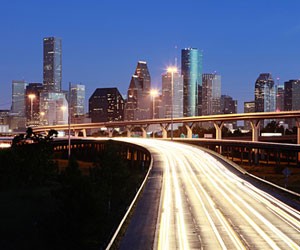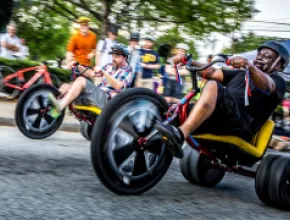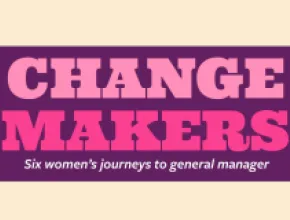Meetings Focus recently reached out to the industry in order to share a sharper picture of the driveto meetings landscape.
What defines an event or destination as having "drive-to" status? What attracts planners and groups to such locales? And what do some of today's drive-to destinations have on the docket for visiting attendees? Here's the takeaway, including plenty of trends and tips to ponder on the subject of drive-to gatherings.
Sarasota's Side of Things
In Florida, Kelly M. Defebo, TMP, meeting and
group sales manager for Visit Sarasota, had her
own unique take on what constitutes a 'drive-to'
setting.
"Drive market definitions can vary," Defebo says. "One hundred miles is considered to be the amount of mileage that is just far enough away from home for most people to generate at least one room night."
While from this perspective, any destination might be designated as a "drive-to," Defebo adds that a drive-to locale might be chosen due to being within a one- to three-hour drive for all potential attendees.
"Also," she adds, "groups that do not have the budget or attendees that do not have the budget for airfare choose a drive-market destination in order to keep attendance numbers up at their events."
And when a group in need of added attendance matches with the perfect drive-to locale, it's a real win-win, according to Defebo.
"Every group wants increased attendance at their meetings," she says. "Likewise, every destination wants increased room nights and a greater economic impact. When a destination promotes themselves as a perfect drive market and succeeds in doing so, the motivation is the resulting economic impact and the added opportunity to show off their destination as not only a drive-market for business, but also for leisure."
Houston, Texas Tips
Of course, not everyone defines drive-to's in the same fashion. Houston—
home to one of the busiest airports in the U.S.—heavily markets
itself to state associations as a drive-to destination.
"Being the fourth-largest city in the U.S., our city has great airlift but also easy access from all of the major cities in Texas," says Nathan Tollett, director of sales for the Greater Houston CVB.
In terms of trends, Tollett says in this cost-conscious economy he's seeing requests for parking information, including rates, near the convention center, as well as possible incentives and discounts tied to parking costs. When it comes to tips on planning a drive-to function, he advises not only sharing the best routes to reach the facility, but providing maps that outline parking possibilities, along with rate ranges.
Estes Park, Colo. Insights
To Amber Connor, a spokesperson for Estes Park, Colo., a 'drive-to'
destination implies one that is inaccessible by plane and can
only be reached via automobile. With that approach, this
little Colorado community fits the bill to a "T."
"Estes Park is a prime example of a drive-to meetings destination," Connor says, "since there is no direct airport access and it is only accessible by driving to it."
According to Connor, groups enjoy drive-to spots generally "because they are typically less expensive; are quieter, allowing for optimal focus, rest and relaxation; and provide a serene environment for team building and de-plugging through a variety of outdoor activities." She also remarks that the offerings at the typical drive-to location match a current wave in the industry.
"One of the hottest trends we are currently seeing is an increased interest in nature, experiential health and wellness experiences," she says. "Drive-to markets typically have access to more of these components that allow groups to engage in meaningful experiences for overall well-being."
Estes Park's specific allure, she adds, is due in part to its proximity to Rocky Mountain National Park, which borders the village on three sides, an abundance of year-round outdoor recreation activities, ease of accessibility with a straight highway drive, and affordability. PageBreak
Newport Beach News
To Michelle Donahue, director of sales for California's Visit Newport
Beach, drive-to status simply implies "a market that is within a twoto
three-hour drive from concentrated populations."
Time and money are the biggest factors spurring planners and groups to choose these destinations, according to Donahue, with added attendance a happy side effect of the approach.
"Choosing a drive market can help the group in three ways: cost, time and attendance," Donahue explains. "Certainly with airfare costs skyrocketing, transportation costs are a big driver of the final decision to go to a conference. From a time standpoint, flying requires two to three hours of logistics before you even get on the plane. Attendance will likely increase when you cut down on cost and time factors."
Newport Beach's group business is about 20 percent drive-to, according to Donahue, which she attributes to both the location and appeal of the SoCal city.
"There are 22 million people between San Diego and Santa Barbara, or 60 percent of the population of California, all within 'drive market' range of Newport Beach," Donahue says. "For many of them, the drive to Newport Beach can be a scenic coastal route on the Pacific Coast Highway. Once they are here, they enjoy coastal scenery and breezes as well as the relaxing feeling of being in a resort setting."
A National Perspective
While based out of Mechanicsburg, Pa., Julie B. Walker, CMP, is an
independent planner with experience planning both nationally and
globally. She shared her thoughts on the nature of drive-to's and also
offered up some tips for planning such events.
"To me, a 'drive-to' destination would be one that is not closely accessible to national/international airports, requiring your target audience to drive rather than fly to your destination," Walker states. "I would also categorize 'drive-to' destinations as being more rural than urban. Trying to corral hundreds of attendees through congested city streets and the resulting parking headaches is a logistical nightmare that most planners would prefer to avoid when they know that most of their attendees will be driving. Thus, it is far easier to consider rural destinations rather than urban venues in these instances."
She mentions Lancaster, Pa., as a quintessential drive-to spot.
"It is not necessarily inaccessible by air, but it is much more accessible by car," Walker explains. "Most venues in this area offer complimentary parking, and there is not a major downtown area with heavy traffic congestion. I'm sure there are thousands of options just like this across the U.S."
In terms of 'do's' for selecting a drive-to spot, Walker suggests picking a location with a high volume of safe, secure and easy-toaccess affordable (or free) parking, as well as choosing a locale that is appealing to the specific needs/likes of your target audience—such as nearby restaurants, shops or on-site activities and dining options.
She also offered up one major 'Don't' for drive-to destination selection: "Don't pick a location that you can't find using a standard GPS or navigation system!"






